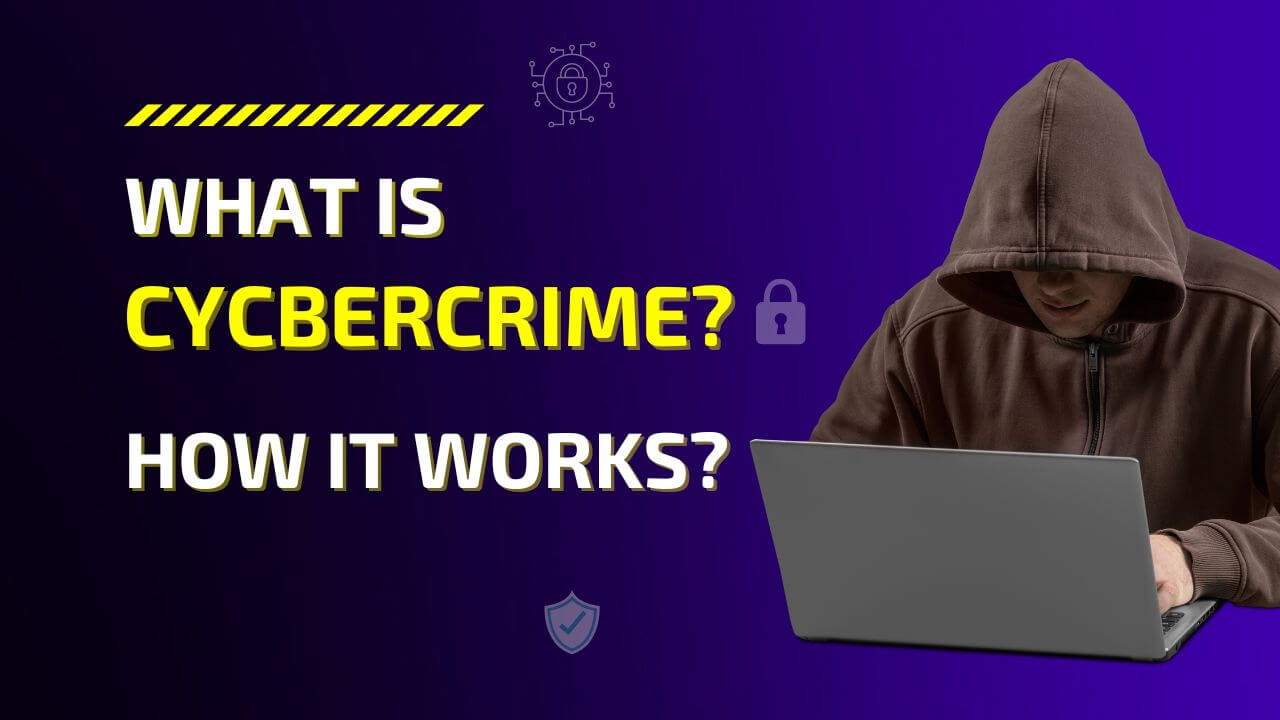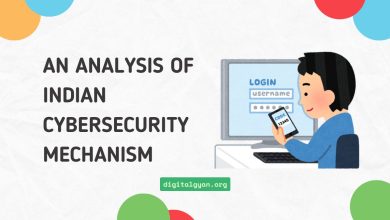What is Cybercrime? Types and Tips to Stay Protected
Cybercrime is criminality conducted through the use of computers, networks, or other electronic devices to hack, steal data or disrupt service.
Identity theft and phishing attempts, ransomware attacks, as well as computer hacking, all are used by cybercriminals to take advantage of weaknesses in order to compromise individuals, firms, and governments.
With the emergence of artificial intelligence, cloud computing, and e-commerce, cybercriminals are constantly adapting their techniques. Learning about how cybercrime operates is the initial step towards safeguarding yourself and your organisation against potential threats.
In this blog, we will discuss the various forms of cybercrime, how cybercriminals conduct operations, and the best practices to remain safe in the online world.

Types of Cybercrime
There are different kinds of cybercrime:
Phishing – Phishing is a type of online fraud that involves tricking people into giving away personal information such as passwords, credit card numbers, and bank account information. The attacker usually poses as a trustworthy entity in an email or other online communication, and the victim is lured into clicking on a link that takes them to a fake website that looks legitimate. Once the victim enters their personal information, the attacker can then use it to commit identity theft or financial fraud.
Phishing attacks are becoming more and more sophisticated, and they can be very difficult to spot. That’s why it’s important to know the signs of a phishing attack and how to protect yourself. Be very cautious if you receive an unsolicited email or other communication that asks you to click on a link or provide personal information. Don’t click on any links or reply to the message. Instead, contact the company directly to determine if the communication is legitimate.
You can also protect yourself by keeping your computer’s security software up to date and by being careful about the information you share online. Don’t post personal information on social media sites; be cautious about the websites you visit. Only enter your personal information on websites that you know and trust. If you’re ever unsure about a website, don’t hesitate to contact the company to verify its legitimacy.
Scam emails – We’ve all seen emails from strangers promising us wealth, love, or amazing opportunities. They often look legitimate, using branding and language that seem professional. But these are what are known as “scam emails,” and they’re sent to trick people into giving away personal information or money.
Scam emails can come in many forms, but they all have one goal: stealing your money or identity. They might promise you a prize, a job, or a chance to invest in a new business venture. They might even pretend to be from a friend or family member needing help. No matter what the offer, the goal is always the same: to get you to hand over your hard-earned cash.
Malware – A cybercriminal can create malware, a piece of software designed to infiltrate your computer. Malware comes in various forms, like malware attachments, fake invoices, fake social media sites, fake email accounts, etc.
Viruses – A virus is malware that, once executed, changes data on the victim’s computer without his knowledge. They also infect your computer and can damage it to the extent that you cannot afford to repair it.
Botnets – Botnets are networks of computers that have been infected with malware and can be controlled by a cybercriminal. These computers can send spam, launch attacks, or steal information. Botnets can be very large, with some estimates suggesting millions of computers in these networks.
While botnets can be used for good, such as sending out warnings about impending natural disasters, they are more often used for nefarious purposes. Cybercriminals can use botnets to launch distributed denial of service (DDoS) attacks, which can take down websites or overwhelm servers with traffic.
Botnets can be utilized to send spam or phishing emails or to capture login details and other confidential information. Botnets pose a big threat to both businesses and individuals. You may not even realize if your computer is in a botnet. You should update your computer with the most current security patches and employ a well-known antivirus software to guard your computer against being used as part of a botnet.
How to protect yourself against cybercrime
As cybercrime is growing and evolving every day, it is becoming increasingly difficult for people to identify and protect themselves against online fraud. You must know what cybercrime is and how to protect yourself against it. Here are some tips to help you protect yourself:
Understand how hackers identify you
Identification is the first step in online fraud. It involves identifying your computer and all other electronic devices you use to access the internet. It may involve the identification of a credit card, a debit card, or a password.
One of the most common ways of identifying people and their computers and devices is through cookies. Cybercriminals place cookies in your browser and use them to identify you and your computer. Cookies are small pieces of information that are stored on your device and sent back to the computer hosting them whenever you visit a website.
Never reuse passwords for any account. Use a password manager such as 1Password, LastPass, or 1Password, and you can make sure that your different accounts have unique passwords, so if one account is hacked, your others are not at risk. Never access any of your accounts on public computers. Only access them at your home or office if you must do this. You may also use a virtual private network or VPN to access them.
Understanding phishing emails and what they can do
You will frequently be getting emails and phone calls from the scammers. The emails and phone calls are meant to confuse you and manipulate you into revealing your personal details. The scammers masquerade as firms you can trust. The cybercriminals also pose as other people or organizations, e.g., physicians, banks, bank staff, or government authorities. They can send you a copy of the original payment or bank document and request you to update your information, or they can simply request you to input your details or provide you with your password.
Scammers may tell you that there has been a technical issue with your account, or they may say that you need to pay for some sort of service that you did not order. They will often ask you to pay to fix the problem, and if you agree to pay the scammers, they will make it look like you have given them the money. The scammer will then ask you to send them a new copy of your card or bank statement. In most cases, you will have sent the scammers the money, but this is just to get your money and then move on to the next victim.
Understand scam websites and what they can do
Cybercriminals use fake websites to defraud you. These fake websites look and feel exactly like the real thing. They may be based on real-world organisations such as businesses, government agencies, or charities. However, in some cases, they are entirely fake websites created by cybercriminals.
Cybercriminals can pretend to be an online bank, travel agency, or business that offers technical support. They want to make you visit the site and let them into your computer or share your personal information with them. You must never go to a website that is not valid and trusted. To verify if a website is valid, just check its domain. If the domain does not exist, then the website is fake. Do not open an unknown attachment on an email or social media site. If in doubt, call the website, the organisation, or the person who sent the mail.
Also Read: Meaning and Purpose of a Cybersecurity Disaster Recovery Plan
Conclusion
Cybercrime is a continuously changing menace in the computer era, preying on people, corporations, and governments via multiple sophisticated schemes. As technology progresses, so does the nature of cybercrime, so much so that awareness of cybersecurity and anticipatory precautions have become more essential than ever. Knowing about the various forms of cybercrime and how they work enables individuals and organizations to more effectively guard their sensitive information, money, and internet persona. Remaining aware, enforcing rigorous security measures, and employing advanced cybersecurity technologies are crucial steps towards protecting against cyber attacks.



